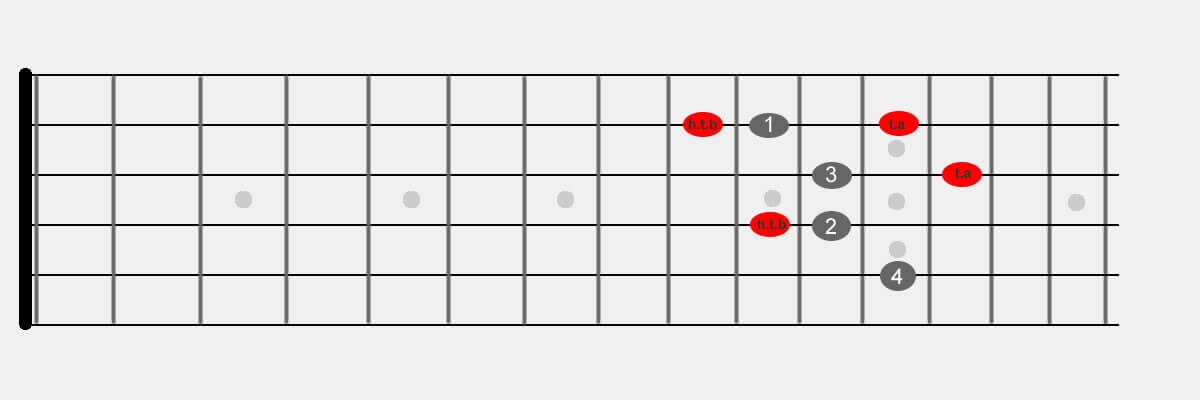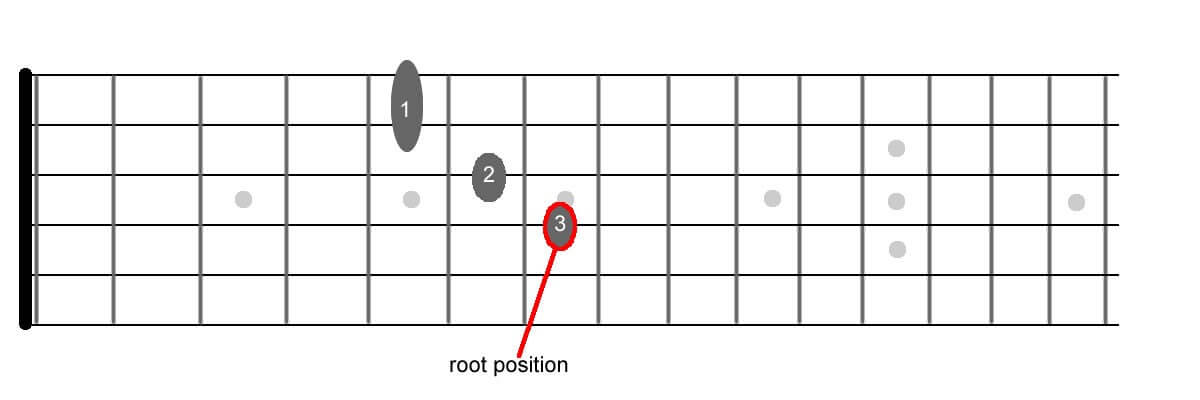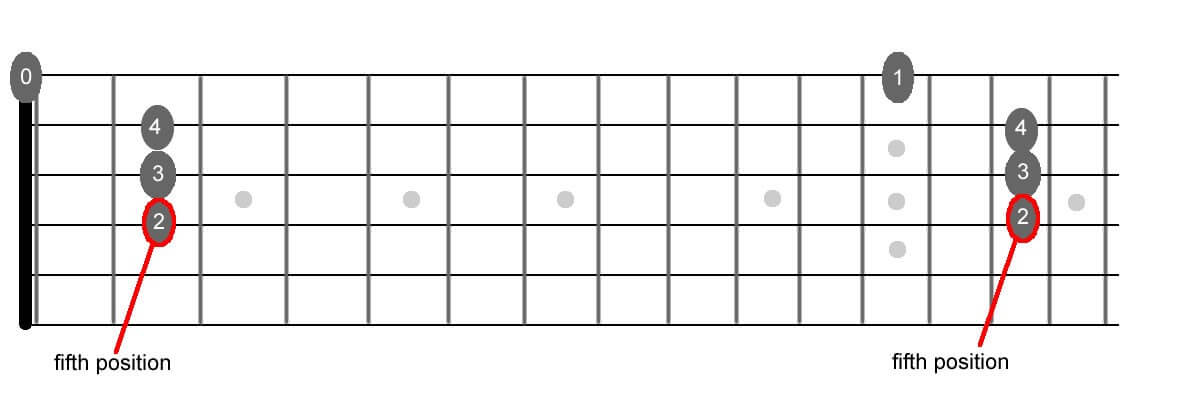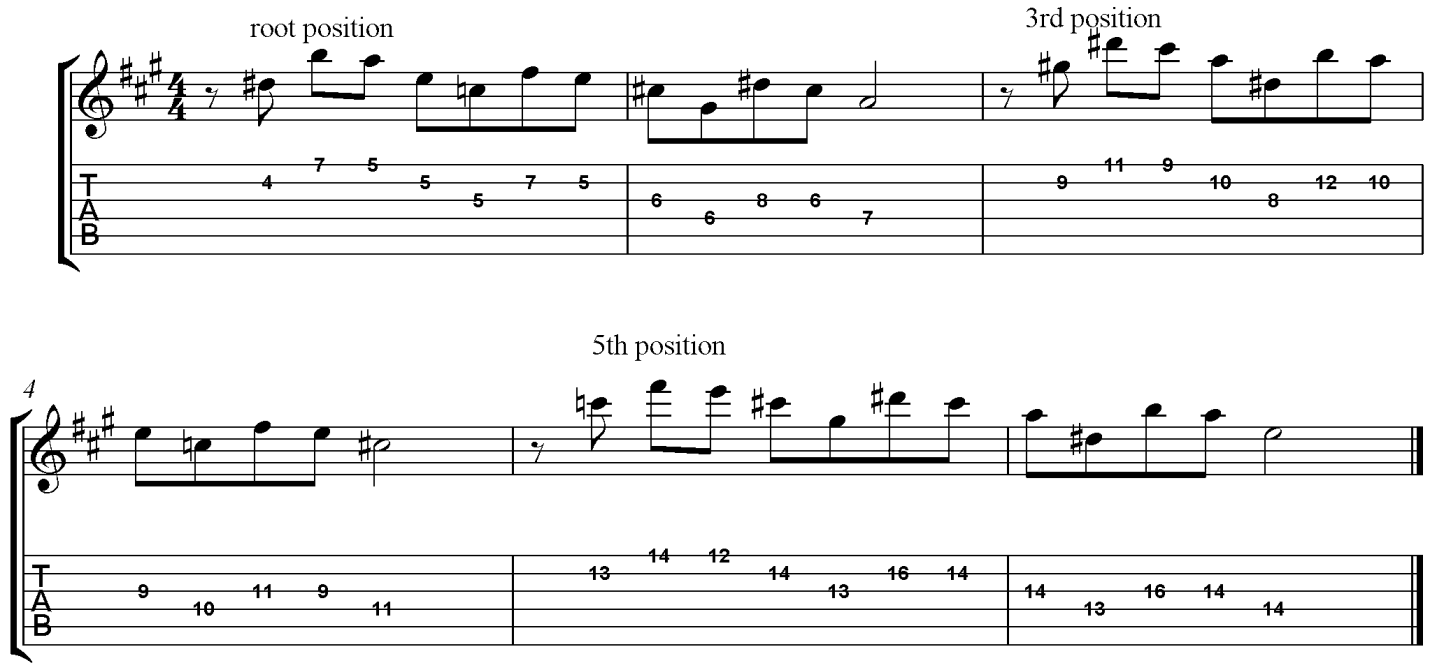
The first phrase of Django’s Tiger is so beautiful that I just had to understand it.
It makes it easier to see it over the following chord shape:
Figure 1: A6, the chord shape the phrase sits on

For each note of the chord, Django uses an enclosure, which is a half tone below the chord note (target) and one tone above the chord note (target):

In the first phrase of Django’s Tiger, Django extends this idea onto two strings and adds more tension to the musical sentence.
Ex 2: Double enclosure

In this phrase, Django uses a half tone approach below the 3rd degree, then one tone above the 6th degree, and then resolves the tension to the 6th and then to the 3rd degrees.
The numbers in the following picture demonstrate the chord degrees and not the fingering.
Figure 3: A6 with double enclosures

Now here is an exercise that I came up with using this idea. In this exercise, you will learn how to master this idea in a systematic way over a major chord, in three positions. We will use three inversions of the A major chord. The first example is in the following shapes:



The exercise uses two notes at a time. For each pair of notes, we play a note that is a half step below the lower one and a note that is one tone above the upper one.

Once you understand this principle, you can apply it to any chord shape you like and to any pair of notes that you like. The notes you choose may be chord tones, but they can be tensions as well – 9th, 6th and so on.
